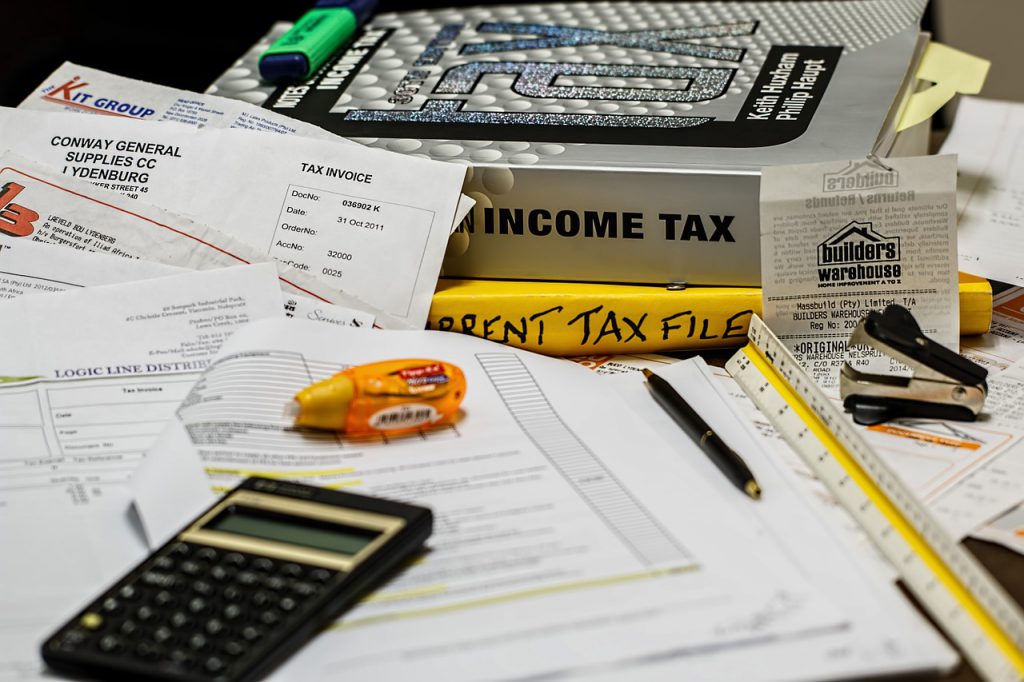Tax and Expenses for Online Tutors
Self-employed tutor expenses & tutoring tax tips from a private tutor
Hello online tutor! Here in the UK, it’s that time of year again when the deadline for annual tax returns is fast approaching. Sure, it’s not the sexiest part of the job, but as a self-employed online tutor, I need to submit my online tax return by 31st January to avoid penalties. The good news for all of us private tutors is that it’s not as complicated as you might think and, like my tutoring, can all be done online.
More...
* Please note this article is based on the UK tax system and is intended as information for tutors only, not as a definitive guide to self-employed tax. Contact an accountant, tax expert, or financial advisor for financial advice.
** If you are one of the many private tutors on the lookout for more students to increase your earnings, I recommend you apply to The Profs Tutors and Spires Online Tutors, reputable websites that keep tutors busy with lots of jobs.
Getting set up as a private tutor
If you’re new to online tutoring, you must first decide what business you want to run. There are a range of options for self-employed private tutors, such as a business partnership or a private limited company, but to keep things simple from the expense and income tax aspect, let’s look at how to get set up and register as a sole trader first.
What’s a sole trader?
If you run your own online private tutoring business as an individual and are, therefore one of the UK's many self-employed tutors, you can be classed as a sole trader. This means you get to keep all of your business’s earnings (tuition profits) after you’ve paid tax on them to HMRC. Nice.
By the way, if you’re not sure about what counts as self-employed, click here.
How to register as a private tutor?

The first thing you’ll need to do to get set up as a sole trader in the UK is to create a Government Gateway account and register for Self Assessment. If you haven’t sent a tax return form before, you can register online here.
When you register, you’ll get a letter with your own 10-digit Unique Taxpayer Reference (UTR). At this point, you can also register for the Self Assessment online service. I submit my tuition earnings tax return online using this service as it’s fast and convenient. You can send in a paper return if you prefer, but the deadline for that was 31st October 2022.
Self-employed tutors tax tip: The deadline to register for Self Assessment is October 5th, and it can take up to 10 working days to receive your activation code, which you’ll need when you first log in to your online account.
Your tax return responsibilities as a sole trader tutor
Here are the 3 key things you’ll need to do as a self-employed tutor and registered sole trader:
- Keep records of your tutoring business’s sales and expenses (I’ll talk more about tuition expenses in a minute)
- Send a Self Assessment tax return every year (set a reminder to get this done online before 31st Jan)
- Pay Income Tax on your profits as a tutor, and Class 2 and Class 4 National Insurance
Self-employed tutors tax tip: The UK tax year runs from 6th April to the following 5th April. So by 31st January 2023, I need to submit my tax return and pay tax on my profits from 6th April 2021 to 5th April 2022.
Income tax for tutoring
Before moving on, tutors, let’s have a quick look at income tax and the difference between Class 2 and Class 4 National Insurance for you as a self-employed private tutor.
The amount of income tax you pay each tax year when self-employed depends on two things:
- How much you earn above your standard Personal Allowance (currently, you don’t have to pay any tax on the first £12,570 of income)
- How much of your income falls between each tax band, which there has been a lot of news about in 2022! (see table below):
Personal Allowance | Up to £12,570* | 0% *Frozen til 2028 |
|---|---|---|
Basic rate | £12,751 to £50,270* | 20% *Frozen til 2028 |
Higher rate | £50,271 to £150,000* | 40% *to £125,140 |
Additional rate | over £150,000* | 45% *over £125,141 |
National Insurance
If you’re a self-employed tutor, there are two types of National Insurance to pay:
- Class 2 (if your profits are between £6,725 and £11,908. The current fixed amount you pay is £2.85 per week (a total of £148.20 for the year).
- Class 4 (if your profits are £12,571 or more per year). The rates are currently:
12% on profits between £12,571 and £50,270
2% on profits over £50,271
That means if your total self-employed profits for the year are less than £6,725, you don’t have to pay any National Insurance. If your annual self employed tutor profits are between £6,725 and £11,980, you only have to pay Class 2. But if your annual self employed profits are £12,571 or more, you need to pay Class 2 and Class 4 National Insurance. You can pay for both Class 2 and Class 4 through your Self Assessment tax form. If you need a self assessment tax check, I advise you to contact an accountant.

Filing your tutoring tax return form online
Tutors, before you login and file your tax return online for the first time, please read this short guide:
- Have your UTR (the 10-digit number that’s on the registration letter that HMRC sent you when you registered as a self employed tutor)
- Enrol for the online service (you can do this at the same time as creating your Government Gateway account here)
- Activate the online service using the activation code sent in the post.
When all that’s sorted, you can now sign in to your Government Gateway and file your tax return here.
Self-employed tutor tax tip: As you can see, there are a few steps to complete your registration process, so don’t leave it until Jan 30th before you get started. Leave plenty of time to avoid missing the self-employed submission deadline.
Business and expenses records for self-employed tutors

There are two different accounting methods that you’ll need to choose from for your private tutor business:
- Traditional accounting - You record income and expenses by the date you invoiced or were billed
- Cash-based accounting - You only record income or expenses when you receive money or pay a bill.
The choice is yours, tutors. Which option you go for could depend of whether your private students pay for lessons in advance or if you use an invoicing system to collect payments after the lesson or monthly. One advantage of the cash-based system for tutors is that you won’t need to pay Income Tax on the money you haven’t yet received from your students in their self-employed accounting period.
Records you need to keep
- All sales and income figures
- All business expenses
- Records about your personal income
- Also VAT records if you’re registered for VAT and PAYE records if you employ people
Self-employed tutor tax tip: You don’t need to send your records in when you submit your tax return, but they must be accurate so you can show them to HM Revenue and Customs (HMRC) if requested.
Business Expenses
What’s great about being a self-employed, online tutor is that you don’t need much money to get started and the ongoing costs are low. You can also deduct some of these running costs to work out your taxable profit (as long as they’re allowable expenses).

Tutor costs you can claim as allowable expenses include:
- Office costs, e.g. tutor stationery or phone bills (most of my lesson materials are digital, and I use Zoom for my lessons, so these are a minimal expense for me)
- Travel costs, e.g. fuel, parking, train or bus fares (I currently tutor exclusively online, so my travel costs are zero, but if you do face-to-face tutoring, you can claim back the expense of your travel costs)
- Financial costs, e.g. insurance or bank charges (I saved £200 on my tutoring insurance by using The Tutors’ Association)
- Costs of your business premises, eg heating, lighting, business rates
- Advertising or marketing, e.g. website costs (I think every online tutor should write and publish their own website, but it doesn’t have to cost you an arm and a leg).
- Working from home – more than just an excuse to wear your pyjamas to work!
Self-employed teacher tax tip: If you use something for both business and personal reasons, you can only claim allowable expenses for the business costs. For example, if you work from home (one of the advantages of online tutoring), it’s possible to claim a proportion of your costs for things like heating, electricity, Council Tax, mortgage interest/rent, internet and telephone use.
There are two ways you can go about this.
Option A - Working out the actual costs

Find all your bills. Then divide your costs based on factors like how many rooms you use for your tutoring or how much time you spend working from home.
For example:
You have 5 rooms in your house, but you only use one as an office for your online tutoring. Your electricity bill is £500 per year. Based on the assumption that all the rooms in your house use the same amount of electricity, you can claim £100 as allowable expenses (£500 divided by 5).
If you tutor from home 5 days a week, you could claim £71.43 as allowable expenses (£100 divided by 7 days x 5 days)
You can then calculate the proportion of your other bills in a similar way.
If that all sounds a bit complicated, there’s another option for calculating these allowable expenses (if you’re a sole trader and work from home for 25 hours or more per month):
Option B - Simplified expenses
This is a flat rate based on the hours you work from home.
Hours of business use per month | Flat rate |
|---|---|
25 to 50 | £10 |
51 to 100 | £18 |
101 and more | £26 |
Not sure whether you should use simplified expenses or calculate the actual costs of working at home based on your bills? Use this simplified expenses checker to compare.
Self-employed teacher tax tip: Completing your tax return is not a 5-minute job. However, if you’ve got all the right info and kept organised records of your income and expenses, it’s possible to get it done in a few hours.
Self-employed teacher tax tip - Balancing Payments and Payments on Account - WARNING!
Your bill includes the tax you owe for last year (e.g. from 6th April 2021 – 5th April 2022). This is called a ‘balancing payment’.
WATCH OUT! If this is more than £1000, your bill will also include an additional payment towards next year’s bill! Yep. This is a ‘payment on account’ and is half your previous year’s tax bill.
For example, if your balancing payment for 2021-2022 is £4,000, you’ll also have to pay an extra 50% (£2,000) ‘payment on account’ for next year’s bill. So, you’ll have to pay a total of £6,000 before 31st Jan 2023. HMRC is effectively predicting what you’ll earn next year based on what you earned this year and making you pay half of your tax bill in advance. The other 50% (£2,000) will have to be paid by 31st July 2023.
This was a big shock when I did my first Self Assessment tax return, and it felt like I had to pay one and a half tax bills all at once. One way to avoid being surprised like me, is to regularly save money each month for your tax bill so that it’s ready to pay come January. Here’s a handy tax calculator to help you budget for this.
Enter your estimated weekly or monthly profit to determine how much income tax and National Insurance you’ll need to pay.

Me the first time I did my tax return!
"What if I don’t earn the same this tax year as I did last tax year?"
If you earn more than last year and your tax bill for 2017-2018 is higher (e.g. more than £4,000 - the total of your two payments on account), you’ll need to make a ‘balancing payment’ by January 31st 2019. If you earn less than last year and end up paying more tax than necessary, HMRC will send you a refund.
Phew! I know it's quite a lot of information to digest but doing your tax return as an online tutor is totally achievable if you stay organised and keep regular records of your income and expenses, over to you.
You can visit the government site here, if you need some more detailed info about tax and Self Assessment in the UK,
Or you can get help and support for Self Assessment in the form of videos and webinars from HMRC here.
If you have any questions or comments about taxes and expenses for online tutors, please leave a message in the comments box below.


